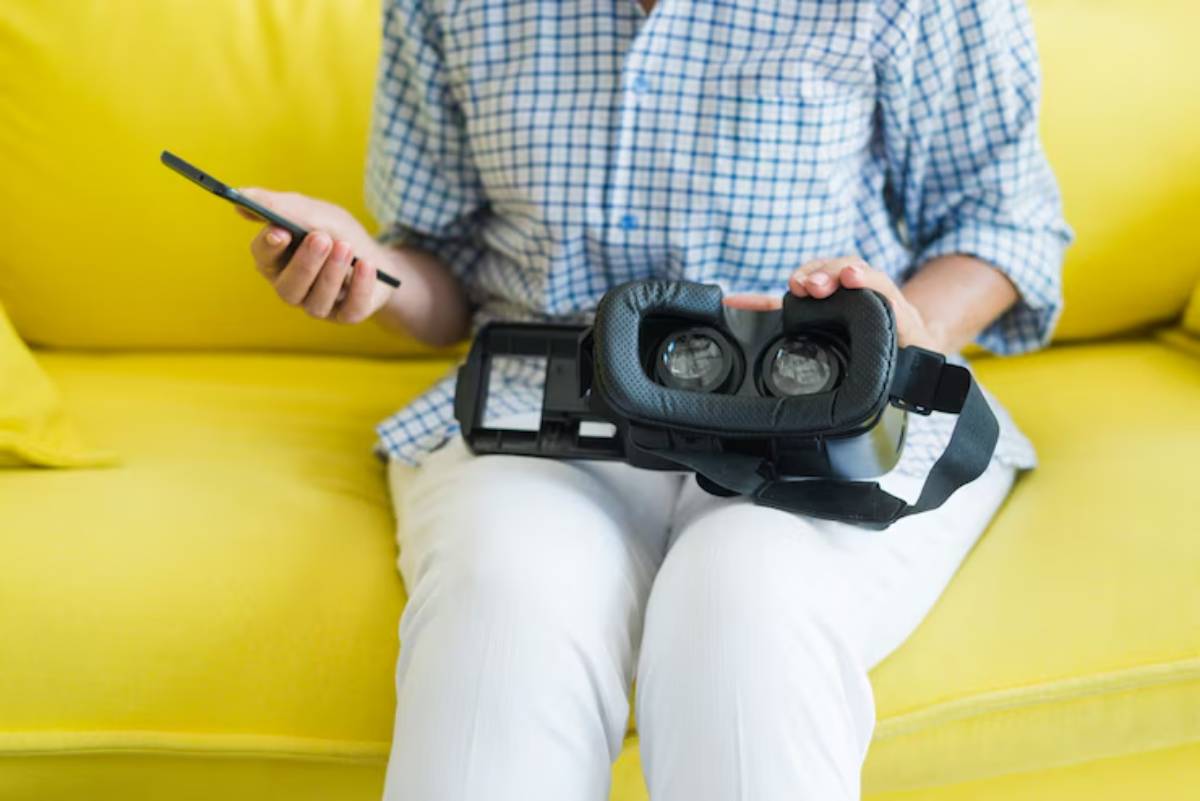
Best Wireless VR Headsets for Untethered Gaming
Imagine diving into a VR world where you’re not held back by cables. No more tripping over cords, adjusting tethers mid-fight, or worrying about how far you can stretch your setup. With today’s wireless VR headsets, you’re free to move, spin, jump, and just play.
The shift from tethered to standalone VR gear has changed how people experience virtual reality. Whether you’re playing fitness games in your living room, exploring alien planets in your bedroom, or travelling with your headset in your backpack, no-PC VR headsets make it possible. The best part? You no longer have to sacrifice quality to ditch the wires.
In this guide, we’ll explore the top wireless VR headsets for untethered gaming, weigh up their strengths, and help you decide which one fits your lifestyle. Whether you’re a casual player or an aspiring VR pro, this is your path to immersive, portable, high-performance virtual reality.
What Makes a Great Wireless VR Headset?
Before diving into the top picks, let’s clarify what we mean by “wireless.”
These headsets:
- Don’t require a wired PC connection to operate.
- Can run natively on their own hardware (standalone mode).
- Often supports optional PC streaming via Wi-Fi for high-end gaming.
Here are the key features that define a great untethered headset:
1. Performance & Processing Power
You’ll want smooth performance, especially for action-heavy games.
Look for:
- Powerful chipsets (e.g. Qualcomm Snapdragon XR2 or XR2 Gen 2)
- Fast refresh rates (90Hz or higher)
- High-resolution displays
2. Battery Life
No one wants to be halfway through a boss battle when the headset dies.
Aim for:
- At least 2–3 hours of active play
- Swappable batteries or charging accessories
3. Comfort & Portability
Wireless headsets tend to be front-heavy.
The best models:
- Distribute weight well
- Have adjustable straps
- Use comfortable, breathable materials
4. Game Library
A headset is only as good as the games it can run.
Check for:
- Access to Meta Quest Store, Viveport, or Pico Store
- Compatibility with SteamVR via wireless streaming (if desired)
Best Wireless VR Headsets in 2025

1. Meta Quest 3
Why it’s a top pick: The Meta Quest 3 is arguably the best all-in-one wireless VR headset on the market. With its advanced mixed reality capabilities, powerful hardware, and excellent display, it offers an unbeatable experience in a standalone format.
Specs at a glance:
- Display: 2064 × 2208 per eye (LCD, pancake lenses)
- Refresh Rate: 120Hz
- Chipset: Qualcomm Snapdragon XR2 Gen 2
- Battery Life: ~2.5 hours
- Weight: 515g
Highlights:
- Slimmer and lighter than Quest 2
- Full-colour passthrough for mixed reality games
- Huge library of titles on the Meta Store
- PC VR compatibility via Air Link or Virtual Desktop
Ideal for: Gamers who want a premium standalone experience with optional PC streaming for high-end titles.
Not sure if it’s worth the upgrade? Compare generations Is the Quest 3 worth the upgrade from Quest 2?
2. Pico 4
Why it stands out: The Pico 4 offers a sleek design, strong performance, and competitive pricing. It’s particularly popular in Europe and Asia, with growing developer support.
Specs:
- Display: 2160 × 2160 per eye
- Refresh Rate: 90Hz
- Chipset: Snapdragon XR2
- Battery Life: ~3 hours
- Weight: 586g (balanced with rear battery)
Highlights:
- Excellent visual clarity and colour vibrancy
- Wider FOV than Quest 2
- More comfortable fit for long sessions
- Supports PC VR streaming
Ideal for: Users who want a high-quality wireless headset without entering the Meta ecosystem.
3. Meta Quest 2
Still worth it in 2025? Absolutely. It may be older tech, but it remains a budget-friendly wireless VR headset with access to the same game library as the Quest 3.
Specs:
- Display: 1832 × 1920 per eye
- Refresh Rate: 90–120Hz
- Chipset: Snapdragon XR2
- Battery Life: ~2–2.5 hours
- Weight: 503g
Highlights:
- Great entry point for beginners
- Wide game selection
- Strong developer and modding community
Ideal for: First-time VR users, families, or anyone on a tighter budget.
4. Lynx R1
A unique hybrid: The Lynx R1 is a lesser-known but fascinating entry. It blends augmented and virtual reality, with full-colour passthrough and an open ecosystem.
Specs:
- Display: 1600 × 1600 per eye (LCOS)
- Refresh Rate: 90Hz
- Chipset: Snapdragon XR2
- Battery Life: ~2 hours
- Weight: ~500g
Highlights:
- Full open-source SDK
- Modular and developer-friendly
- Focus on privacy and decentralised software
Ideal for: Developers, open-source advocates, and experimental users.
5. HTC Vive XR Elite
Premium design, premium features: While not cheap, the Vive XR Elite merges portability with modularity. It can function both as a standalone and as a tethered headset.
Specs:
- Display: 1920 × 1920 per eye
- Refresh Rate: 90Hz
- Chipset: Snapdragon XR2
- Battery Life: ~2 hours
- Weight: 625g (modular design with detachable battery)
Highlights:
- Compact, glasses-style design
- Adjustable lenses for glasses-free use
- Mixed reality capabilities
Ideal for: Tech-savvy users who want a headset that grows with their needs.
How to Choose the Right Wireless VR Headset for You

Ask yourself these questions:
1. What’s your main use case?
- Casual gaming & fitness: Meta Quest 2 or Pico 4
- High-end standalone gaming: Meta Quest 3
- Mixed reality and productivity: Vive XR Elite or Lynx R1
2. Do you plan to stream PC VR wirelessly?
- All five headsets above support it via Wi-Fi.
- For the smoothest experience, use a Wi-Fi 6 or 6E router.
3. Is price or performance more important?
- On a budget? Quest 2 offers the best value.
- Willing to invest? Quest 3 or Vive XR Elite provides future-proofing.
4. Do you care about the ecosystem?
- Meta’s library is the largest, but closed.
- Pico is growing and more flexible in some regions.
- Lynx and Vive offer more open environments.
Getting the Most Out of Your Standalone VR Gear
Here’s how to maximise your wireless gaming sessions:
- Use external batteries: Clip-on battery packs like the BoboVR or Rebuff Reality packs extend playtime by hours.
- Optimise Wi-Fi: For PC streaming, connect both your headset and PC to the same 5GHz or 6GHz network with minimal interference.
- Customise your fit: Comfort is key. Use a better head strap, facial interface, or counterweight if needed.
- Clean and maintain: Sweat, dust, and oil can build up. Wipe your lenses, face pad, and controllers regularly.
- Use casting tools: Show off your gameplay on a TV or phone screen using casting apps for added fun.
Conclusion: Cut the Cords, Keep the Quality
Wireless VR isn’t just a convenience — it’s a whole new way to play. With today’s powerful standalone headsets, you can jump into worlds that feel rich, detailed, and unshackled from physical limitations. Whether you’re swinging lightsabers, racing through cyberspace, or fighting off zombies in your living room, the best wireless VR headset gives you the freedom to move like never before.
From budget-friendly to bleeding-edge, there’s a headset here to match your goals and lifestyle. So ask yourself:
what do you want your VR to feel like?
Ready to go untethered? Compare features, pick your headset, and explore more tips in our VR Headset Comparison Guide.
Have a favourite wireless headset or VR game you love? Share it in the comments — or pass this guide on to a friend who’s ready to level up their virtual world.


